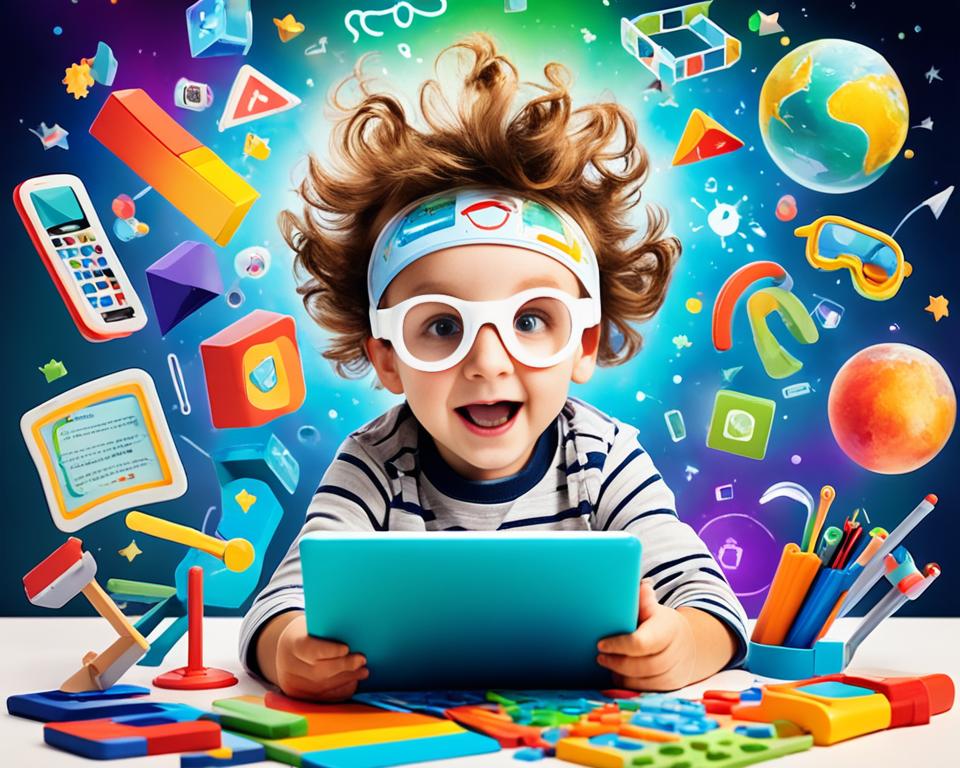In today’s digital landscape, the integration of technology into early childhood education has become increasingly crucial. As an educator, I recognize the immense value that technology can bring to the learning experiences of young children. The use of technology in early childhood education not only helps children view Information and Communication Technologies (ICT) as purposeful tools, but it also enhances their overall learning and development.
To effectively integrate technology into early childhood learning, I employ a multifaceted approach. This includes developing technological literacy and ICT capability, encouraging creativity through digital mediums, promoting digital play in the classroom, utilizing web search for learning, incorporating ICT for literacy and numeracy, and leveraging multiple modes of technology integration. However, it is essential to use technology intentionally, with a focus on advancing learning goals, rather than allowing it to replace the hands-on explorations and child-driven discoveries that are central to a vibrant classroom environment.
Key Takeaways
- Integrating technology in early childhood education helps children view ICT as purposeful tools to enhance learning.
- Developing technological literacy and ICT capability is a crucial aspect of effective technology integration.
- Encouraging creativity through digital mediums allows young learners to explore and express themselves in innovative ways.
- Promoting digital play in the classroom creates opportunities for children to make sense of the digital world in which they live.
- Utilizing web search for early childhood learning can develop technological literacy and support learning objectives.
Develop Technological Literacy and ICT Capability
In the realm of early childhood learning, the development of technological literacy and information and communications technology (ICT) capability is a crucial aspect of integrating technology effectively. Teachers should seek and plan to nurture each component of ICT capability within the most meaningful, context-driven activities in the early years curriculum.
Seek and Plan to Develop ICT Components
Educators must be proactive in seeking and planning to develop the various components of ICT capability in their young students. This includes familiarizing children with the basic operations of digital devices, fostering their ability to access and navigate information, and guiding them in using technology to communicate, collaborate, and create.
Use Content-Free Software to Challenge Children Intellectually
Alongside developing ICT skills, it is crucial to ensure that the software and applications used in the preschool classroom are content-free and challenge children intellectually. These tools should stimulate critical thinking, problem-solving, and creative expression, rather than solely focusing on rote learning or passive consumption of content. By incorporating such thought-provoking technology, teachers can nurture the cognitive development of their early childhood learners.
Encourage Creativity Through Digital Mediums
In the realm of early childhood education, creative development holds its own unique place within the Early Years Learning Framework (EYLF). Leveraging technology in preschool settings provides an exceptional opportunity for young children to explore and cultivate their creativity. As educators, we should encourage children to utilize drawing and painting programs and applications, empowering them to express their ideas and imagination through digital mediums.
Introduce Drawing and Painting Programs
Integrating drawing and painting software into the preschool curriculum can ignite the creative spark within young learners. These digital tools offer a versatile canvas for children to experiment with colors, shapes, and compositions, allowing them to bring their artistic visions to life. By introducing age-appropriate programs and applications, we can foster a sense of play-based learning and encourage cognitive development through the exploration of digital art forms.
Model Software Usage as a Teacher
As teachers, it is our responsibility to model the effective and mindful use of technology in the classroom. By demonstrating our own familiarity and comfort with drawing, painting, and other creative software, we can inspire our students to embrace the digital mediums as a means of self-expression and language acquisition. Through this lead-by-example approach, we can nurture the development of social-emotional skills and encourage a montessori method-inspired learning environment where early literacy and child development are seamlessly integrated with the use of technology.
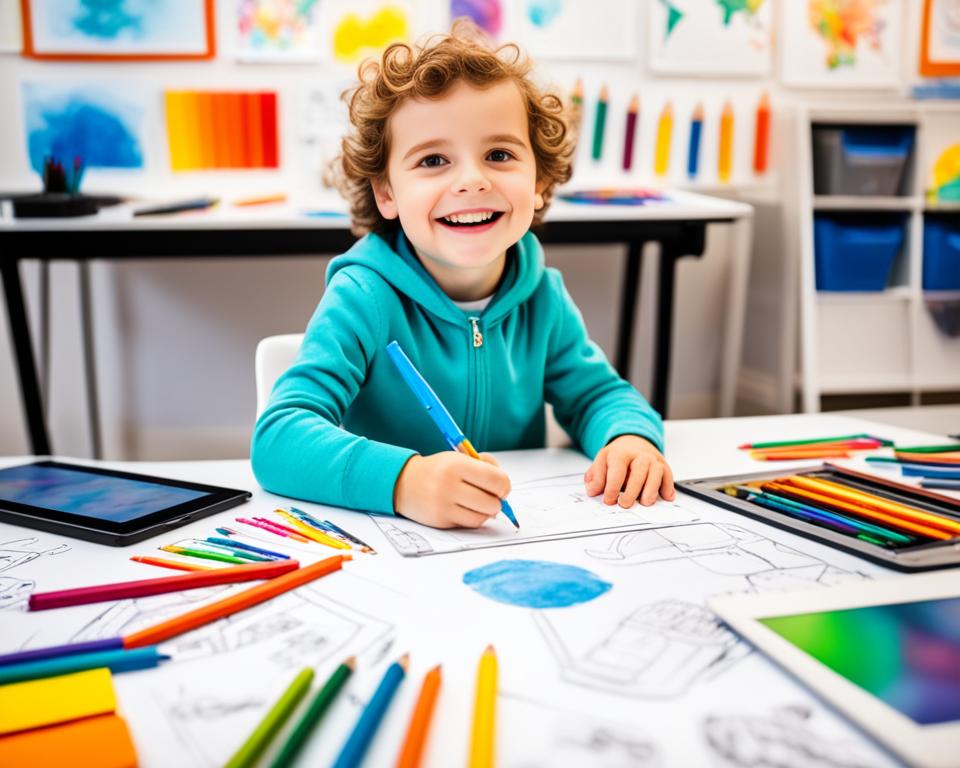
Promote Digital Play in the Classroom
In early childhood education, high-quality role play provides young children with the invaluable opportunity to make sense of the digital world they inhabit. As educators, we should empower our students to actively participate in setting up the role-play area of the learning environment and fill it with quality, appropriate ICT resources for them to explore.
Set Up Role-Play Areas with ICT Resources
Integrating early childhood learning with technology should involve more than simply placing devices in the classroom. We need to create engaging, immersive play-based experiences that allow our young learners to interact with digital tools in meaningful ways. By setting up role-play areas stocked with a variety of ICT resources, from real working tech to non-functioning replicas and even self-made tech items, we can foster a sense of digital play that sparks their curiosity and imagination.
Include Working and Non-Working Tech for Exploration
The Reggio Emilia approach emphasizes the importance of providing children with opportunities to investigate, experiment, and learn through play. In this spirit, we should include a mix of working and non-working technological devices in our role-play areas. This allows young learners to explore the inner workings of technology, tinker with the components, and develop a deeper understanding of how digital tools function. By striking this balance, we nurture their social-emotional skills and kindergarten readiness as they navigate the complexities of the modern, technology-driven world.
Early Childhood Learning: Utilize Web Search
In the world of early childhood education, the internet has become an invaluable resource for both teachers and young learners. Preschool technology can be leveraged to explore the boundless information available on the World Wide Web, enhancing early childhood learning, preschool education, and kindergarten readiness.
Guide Children in Using Keywords for Searches
As teachers, we can guide our young students through the process of effectively using keywords to search for information online. By teaching them how to formulate targeted queries, we can help develop their cognitive development, language acquisition, and early literacy skills. This hands-on approach not only facilitates their learning but also fosters a sense of independence and confidence in navigating the digital landscape.
Develop Technological Literacy Through Web Searches
Engaging preschoolers in web searches not only expands their knowledge but also enhances their technological literacy. As they explore the internet, they learn valuable skills such as navigating websites, evaluating the reliability of information, and discerning relevant from irrelevant content. This process lays the foundation for their future success in a technology-driven world, empowering them to become informed and discerning digital citizens.
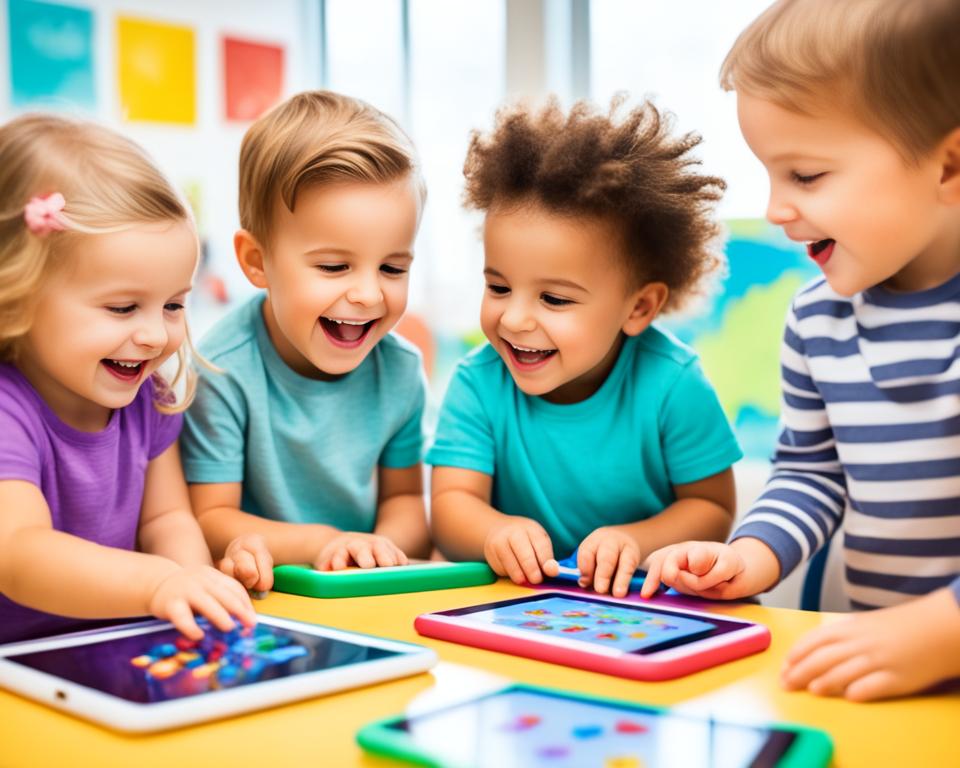
Incorporate ICT for Literacy and Numeracy
The integration of technology in early childhood learning extends beyond just developing technological literacy and fostering creativity. It also involves utilizing software such as word processors and spreadsheets to enhance literacy and numeracy skills. This type of technology in preschool not only supports the development of a child’s ICT capability but also provides valuable opportunities to engage with content-specific learning.
Use Word Processors and Spreadsheets
Word processors and spreadsheets can be powerful tools for early childhood learning. Children can practice their literacy skills by using word processors to compose stories, letters, or simple reports. Spreadsheets, on the other hand, can be utilized to build numeracy skills, allowing children to input data, create basic graphs, and explore mathematical concepts in a digital format.
Choose Software Aligned with Learning Goals
When incorporating ICT for literacy and numeracy, it is crucial for teachers to carefully select software that aligns with their learning goals and the developmental needs of their preschool students. Subject-specific software can be a valuable resource, but teachers should also recognize the potential of ICT in enhancing language acquisition and early literacy development, ensuring they don’t miss out on these important opportunities in the digital world.
| Software for Literacy | Software for Numeracy |
|---|---|
| Word processors, writing apps, digital storybooks | Spreadsheets, math-focused games, virtual manipulatives |
| Supports early literacy, language development, and storytelling | Enhances cognitive development, numerical understanding, and problem-solving skills |
| Aligns with Montessori method and Reggio Emilia approach | Complements hands-on, play-based learning in the preschool classroom |
Utilize Multiple Modes of Technology Integration
In the realm of early childhood learning, embracing the power of technology requires a multifaceted approach. As educators, we can empower young learners by allowing them to freely explore touch screens equipped with developmentally appropriate interactive media. This not only sparks their curiosity but also fosters a sense of comfort and familiarity with digital tools.
Allow Free Exploration of Touch Screens
By providing opportunities for young children to engage with touch screens, we can cultivate their technological literacy and ICT capability. These hands-on experiences enable them to develop a deeper understanding of how technology can be leveraged for learning and self-expression.
Capture Photos and Videos of Children’s Work
Another powerful mode of technology integration involves capturing photos and videos of the children’s creative endeavors, such as their block buildings or artwork. This digital documentation not only celebrates their accomplishments but also serves as a valuable tool for reflection, assessment, and sharing their learning journeys with families and the wider community.
Explore Digital Storytelling with Children
Furthermore, the integration of technology can be seamlessly woven into the art of storytelling. By using smartphones or tablets, we can encourage children to record their own stories about their drawings, imaginative play, or other experiences. This collaborative process of co-creating digital books fosters early literacy development, social-emotional learning, and a deeper connection between the child and the technology they are utilizing.
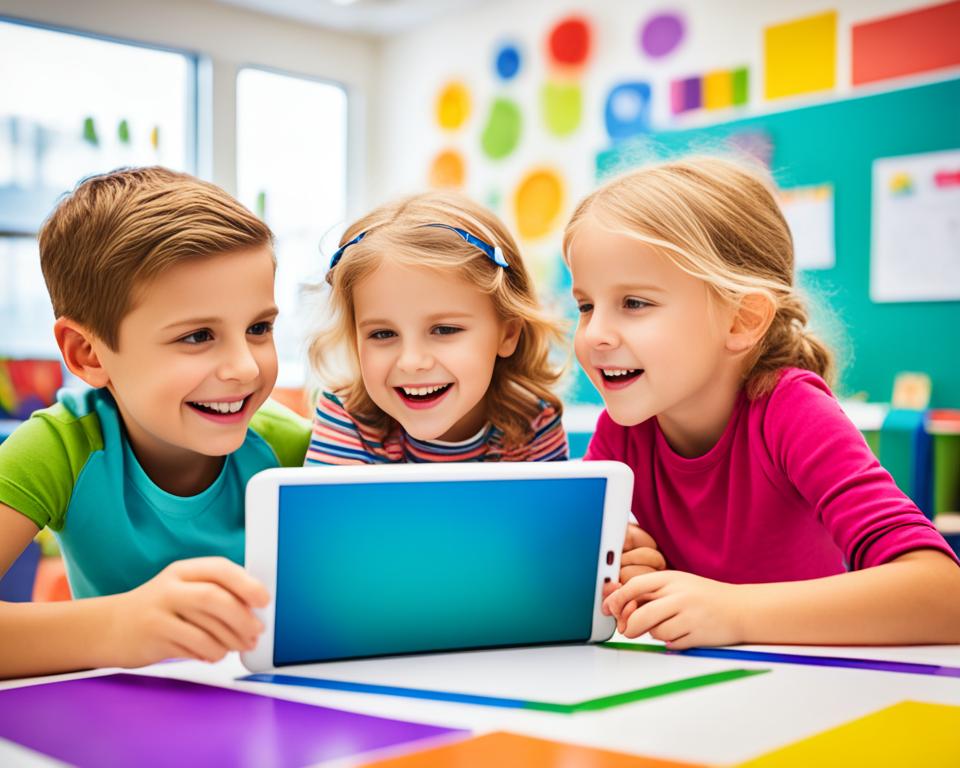
Balance Technology with Relationship Building
While the use of technology and media in early childhood learning can be beneficial, it should never replace the critical opportunities to build the strong relationships that form the foundation of a nurturing learning environment. For a young child to thrive, they must feel connected, valued, and recognized within a community that celebrates their unique strengths, supports their challenges, and normalizes the process of experimentation and learning from mistakes.
Create a Safe Learning Environment
Technology and digital resources do not replace the caring interactions and genuine human connections that demonstrate these core values for the child. Rather, technology should be integrated thoughtfully to complement and enhance the social-emotional development that is so central to early childhood education. By creating a safe, supportive learning environment, educators can ensure that technology is used as a tool to expand possibilities, rather than a substitute for the relationships that are essential for healthy child development.
Use Tech Sparingly for Specific Purposes
Therefore, digital resources in the early childhood classroom should be used sparingly and intentionally, reserved for those instances where technology can support learning goals in ways that would be difficult to accomplish through other means. This balanced approach, grounded in the primacy of human connection, will allow young learners to reap the benefits of technological integration while preserving the core elements of high-quality, play-based, and relationship-driven early childhood education.
Leverage Research-Backed Pedagogy in EdTech
Effective integration of educational technology (edtech) in early childhood learning requires a deep understanding of research-backed pedagogical principles. When leveraged thoughtfully, edtech can enhance the learning experiences of young children, fostering their cognitive development, language acquisition, and social-emotional skills. However, the key is to ensure that the technology aligns with well-established teaching methodologies, such as those found in the Montessori method and Reggio Emilia approach.
Ask Open-Ended Questions
Edtech resources should be designed to encourage children’s natural curiosity and promote exploration. By asking open-ended questions, educators can stimulate critical thinking and language development, allowing young learners to construct their own understanding of the world around them. This approach aligns with the principles of play-based learning, which is a cornerstone of high-quality early childhood education.
Offer Opportunities for Collaboration
Collaboration is a crucial component of social-emotional learning in the early years. Edtech resources should provide opportunities for children to work together, share ideas, and learn from one another. This fosters the development of important skills such as communication, empathy, and problem-solving, all of which are essential for success in both academic and social domains.
Provide Tailored Feedback
Individualized feedback is a hallmark of effective teaching, and edtech should be no exception. By offering tailored feedback that addresses the specific needs and abilities of each child, educators can support cognitive development and language acquisition, ensuring that learning progresses at a pace that is both challenging and achievable. This personalized approach aligns with the principles of child-centered education, as seen in the Montessori and Reggio Emilia methods.
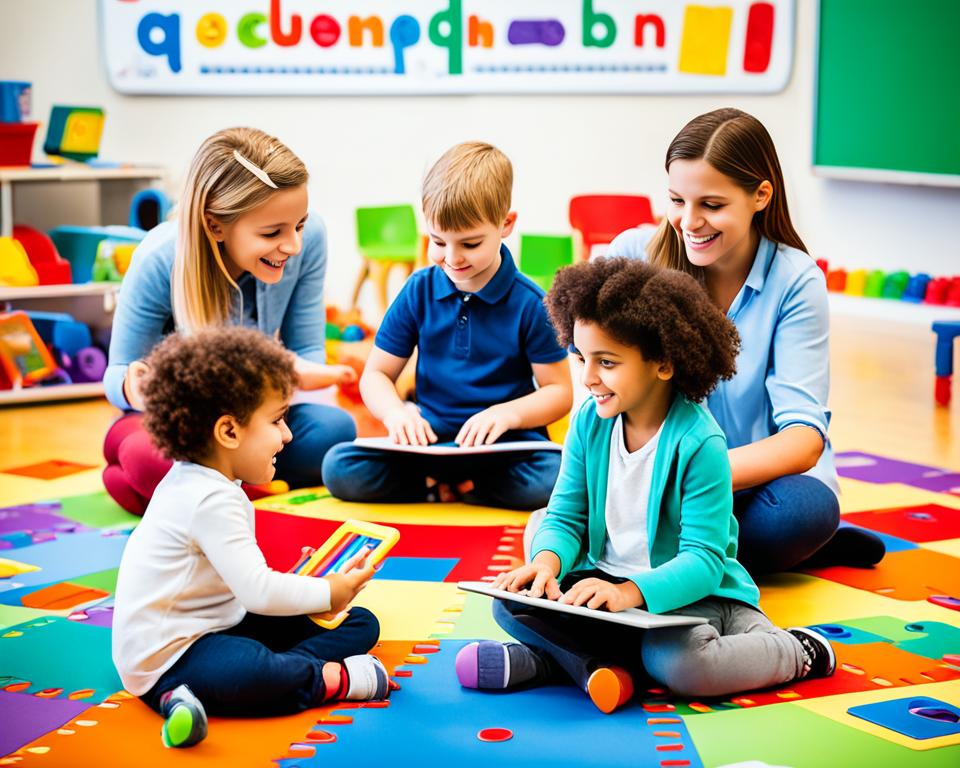
Conclusion
In conclusion, the integration of technology into early childhood learning can be highly effective when done with intentionality and a focus on advancing learning goals. By developing technological literacy, encouraging creativity, promoting digital play, utilizing web search, incorporating ICT for literacy and numeracy, and utilizing multiple modes of technology integration, educators can harness the power of technology to enhance the learning experiences of young children.
However, it is crucial to balance the use of technology with relationship-building and to leverage research-backed pedagogy to ensure that technology is used in service of the learners and the learning environment. The seamless integration of technology into early childhood learning, while prioritizing the nurturing of social-emotional skills and cognitive development, can create a rich and engaging educational landscape where early childhood learning, child development, preschool education, kindergarten readiness, play-based learning, cognitive development, language acquisition, social-emotional learning, early literacy, Montessori method, social-emotional skills, Montessori methods, and Reggio Emilia approach all come together to foster the holistic growth and well-being of our youngest learners.
By striking this delicate balance and leveraging technology in a purposeful and research-informed manner, educators can empower their students to thrive in the digital age while preserving the essential elements of a nurturing and enriching early childhood education experience.
FAQ
Why is the use of technology in early childhood education important?
How can technology be integrated into preschool education?
How can teachers develop ICT capability in the early years curriculum?
How can technology be used to encourage creativity in preschool education?
How can teachers promote digital play in the preschool classroom?
How can preschool technology be used for web search in early childhood education?
How can technology be incorporated for literacy and numeracy in preschool classrooms?
What are some ways teachers can utilize multiple modes of technology integration in early childhood learning?
Why is it important to balance the use of technology with relationship building in early childhood education?
How should research-backed pedagogy be applied when integrating edtech in early childhood learning?
Source Links
- https://www.edutopia.org/article/using-technology-to-enhance-early-childhood-education/
- https://www.linkedin.com/pulse/5-ways-integrate-technology-preschool-michael-hilkemeijer
- https://www.naeyc.org/resources/topics/technology-and-media/preschoolers-and-kindergartners

